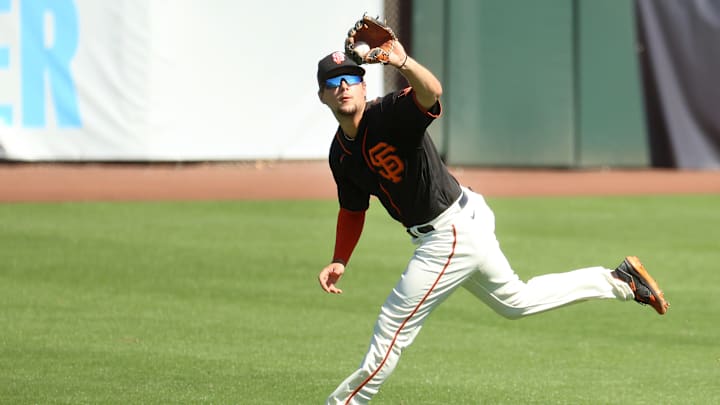SF Giants infield prospect Will Wilson is gearing up for spring training, but he did take a few minutes to answer some questions about a number of topics. According to Baseball America, the 23-year-old prospect is ranked as the No. 14 prospect in a stout Giants farm system.
Interview with SF Giants infield prospect Will Wilson
He came over to the Giants in an odd yet opportunistic move by the front office to acquire a prospect by taking on an underperforming contract. In December of 2019, the Los Angeles Angels shipped Wilson along with longtime infielder Zack Cozart in exchange for lefty prospect Garrett Williams.
The concept behind this deal was that the Giants took on the remainder of Cozart's three-year, $38 million pact from the Angels. In return, they would receive a top prospect that they coveted during the 2019 draft.
Wilson was selected by the Angels with the 15th overall pick of the 2019 draft out of North Carolina State University, which was just five spots behind the Giants picking outfield prospect Hunter Bishop out of Arizona State University. Six months later, Wilson was traded to the Giants.
Since then, the front office has targeted several more North Carolina State University prospects to pair with Wilson. The Giants like Wilson's versatility and he added a new position to his résumé during the Arizona Fall League in 2021. Below are the questions that I asked Wilson along with his responses. Before we get started, I want to reiterate that I appreciate him taking the time during a pretty busy period for baseball:
J: What has your offseason routine been like so far?
W: My off-season routine was built on a 5-day/week program of lifting 3 days and speed training the other 2 days. I would do my hitting routine and fielding every day as well. I wanted to really focus this year on making the body adjustments to get ready for a full season by working on my mobility, along with still gaining speed and strength. On the batting side, I would go through my routine and then set up a machine shape to simulate a different type of pitch for all 5 days. With fielding, I would work starting with knee drills and then work on my footwork with regular ground balls
J: How is changed compared to prior offseasons?
W: This off-season, I wanted to make my strength training more baseball-related. I was deliberate in the exercises I did to make sure they translated to on-field performance. I focused more on getting my body ready to withstand and perform at the highest level of an entire season. Along with that I also focused more on swing mechanics than I have in previous off-seasons.
J: How was your AFL experience?
W: My experience in the AFL was a great time. It was a very relaxed environment where players and coaches all had great insight on ways to get better. I learned a lot of different ways to train and thoughts on the game from my teammates. We had a great group of guys who clicked well so it was always fun to be around them.
J: What was it like playing the outfield in the AFL? Do you expect to see time there going forward?
W: Playing the outfield was a slight adjustment for me. I’ve never been out there so I used early work on days I played the outfield to learn the positions. It was more about learning where to play and knowing the spin of the ball off the bat that helped with the transition. I am not sure going forward if I will see further time in the outfield or not, but versatility is a very useful trait in baseball so it’s good to have that experience.
J: What has been your most challenging adjustment to pro ball?
W: The biggest adjustment to pro ball for me has been learning a consistent prep routine for my body. Having your body ready to go when you play every day is key. Going through my first full season I learned a lot about what I need to do to be ready to compete come game time.
J: What was it like being traded just 6 months after the draft?
W: Being traded so quickly after the draft was initially a shock. Once it settled down and I learned more about the trade and when the Giants reached out, I found out quickly that the organization was a good fit for me and was excited to start playing with them.
J: How has having college teammates (Patrick Bailey/Nick Swiney) helped you adjust to pro ball?
W: Having two former teammates from college on the same organization has been great. It’s always nice to have friends from the same area going through the day-to-day with you.
J: Who is the funniest teammate in the Giants organization?
W: Casey Schmitt has to be one of the funniest guys I’ve met in the organization. He never fails to make the group laugh.
